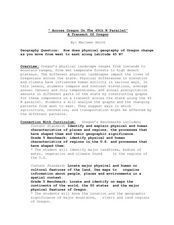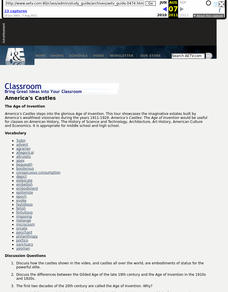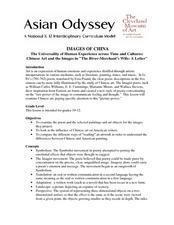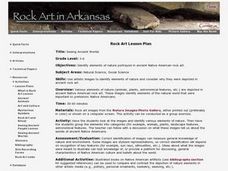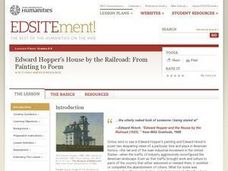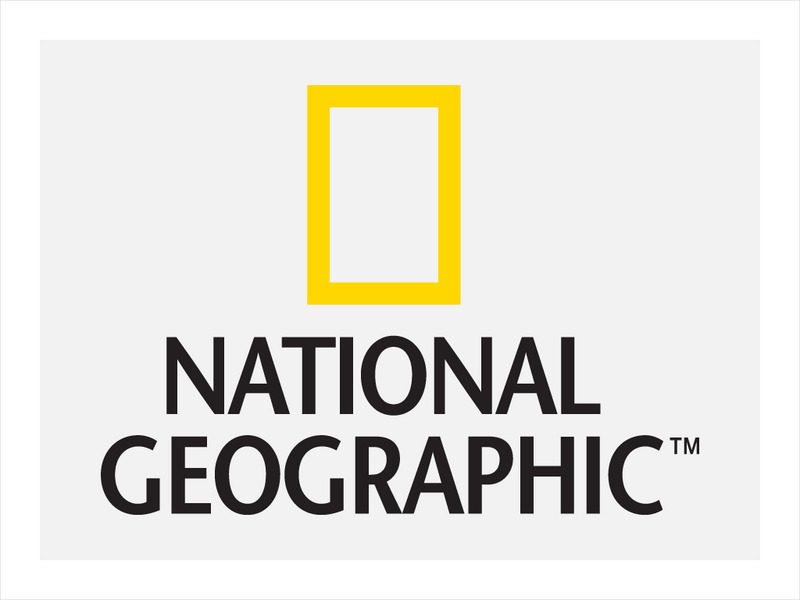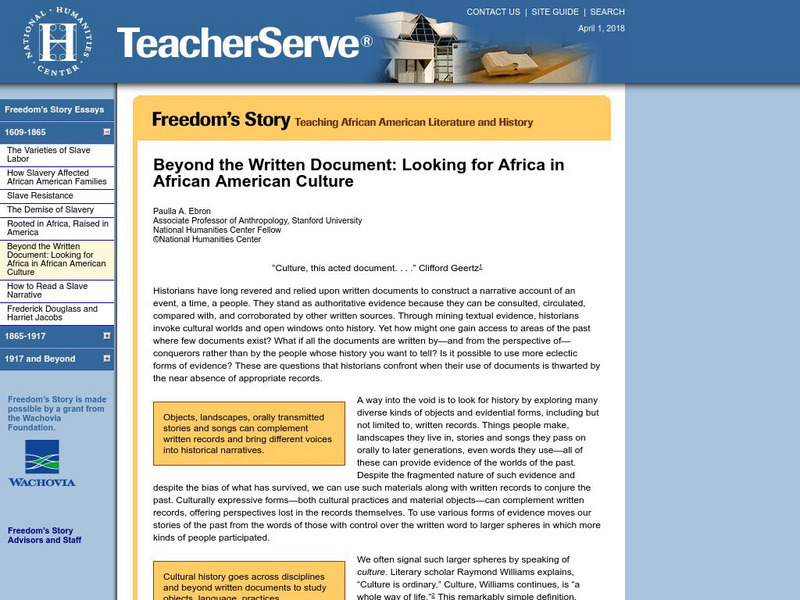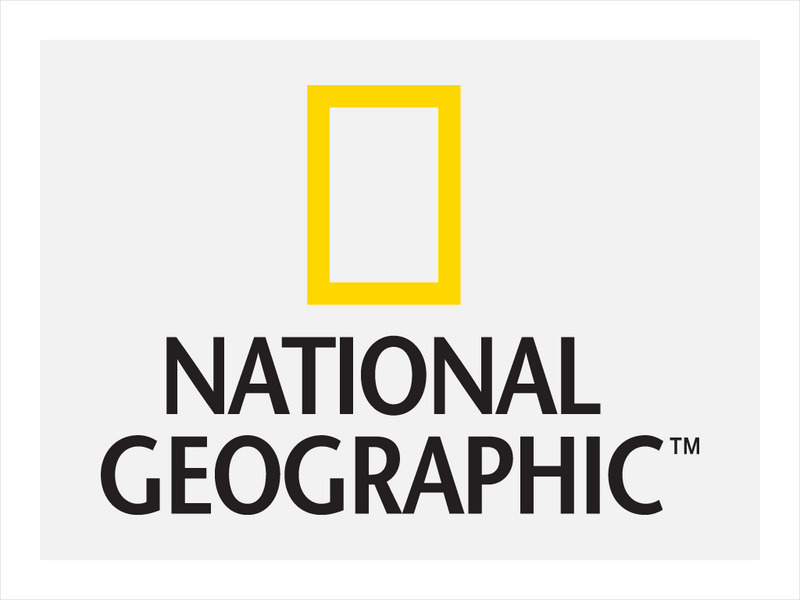Curated OER
Geography and Architecture
Young scholars discuss how terrain and climate affect the design of houses and commercial structures and thus influence the way architects design buildings in this elementary lesson plan.
Curated OER
"Across Oregon On The 45th N Parallel" A Transect of Oregon
Students explore the physical geography of Oregon. In groups, students collect weather and elevation information on Oregon. They organize the data and create maps and graphs of the information. Afterward, students compare the...
Curated OER
Artists as Explorers
Students brainstorm a list of famous explorers from the past. In groups, they complete a worksheet analyzing the art of Karl Bodmer and how one could view him as an explorer as well. They answer discussion questions to end the...
Curated OER
Endangered Lands & Threatened Species Collage Mural
Fifth graders create a class collage mural illustrating endangered lands and threatened species. They also write letters protesting the exploitation of endangered habitats and the destruction of flora and fauna.
Curated OER
Walking With Thoreau
Students engage in a series of activities geared towards studying the author Henry David Thoreau. They use different sources to obtain information to create context for future lessons. Students attempt to model their own lives to that of...
Curated OER
Cartographer and Journalish as Storytellers
Students collaborate in groups of four students to create a written description of their community during a specific year. They analyze data provided by maps and newspaper articles. They meet as a whole class to discuss their conclusions.
Curated OER
America's Castles: The Age of Invention
Students tour the estates built by America's wealthiest visionaries during the years 1911-1929. They discuss the Age of Invention and the people associated with that age in US history.
Curated OER
How We Get From Here to There
Students recognize various types of movement people rely on to get from one place to another, locate the forms of movement on a map and choose one form of movement and research its path.
Curated OER
Deer Tracks
Students use satellite images to track to movement patterns of deer and examine deer behavior. They write stories about a day in the life of a field scientist.
Curated OER
Boston Park System
Pupils complete a variety of activities that go along with the study of and possible fieldtrip to the Emerald Necklace park system in Boston, MA. They discover how urban conditions influenced the creation of city parks.
Curated OER
Images of China
Young scholars examine the Chinese poem "The River-Merchant's Wife: A Letter" by Li Po while comparing the different ways of "reading" an artwork in order to understand the differences between Chinese and American painting.
Curated OER
American Perceptions of the Wilderness
Students examine various American perspectives about the wilderness over time. In small groups they read and analyze writings by William Bradford and Frederick Law Olmsted, summarize the major points of each author, and write an essay.
Curated OER
Steps To An Inquiry Process
Fourth graders investigate the research process. The finding of information about the indian tribes of Montana provides the context for student practice. They identify the problem and generate questions to find answers. The main...
Curated OER
Inside Catlin's Head
Students will develop a variety of skills that include spatial, body kinesthetic, and communication skills. They create journal entries about the artist George Caitlin and a script for a theatrical skit.
Curated OER
Native American Folklore
Learners create a paper that differentiates between written and oral history. They also create a visual narrative that is interpretative.
Curated OER
James Van Der Zee
Young scholars recognize James Van Der Zee as an outstanding photographer who documented and reflected life in Harlem during the 1920s. They identify important aspects of Van Der Zee's life and artwork and compose and shoot their own...
Curated OER
Seeing Ancient Worlds
Students view the images from the Nature Images Photo Gallery and identify various elements of nature. They then group the elements into categories and discuss what these images tell about the worlds of ancient Native Americans.
Curated OER
Edward Hopper's House by the Railroad: From Painting to Poem
Students analyze Edward Hopper's painting and Hirsch's poem to explore the types of emotion generated by each work. In this literary and art analysis activity, students discuss how Hopper establishes tone and analyze Hirsch's use of...
National Geographic
National Geographic: Observing Physical and Cultural Landscapes
In this lesson, students examine photographs of Europe as they learn to distinguish between physical and cultural characteristics of a landscape, and make observations and inferences about the places and people in the photographs. They...
National Geographic
National Geographic: Cultural Diversity in the United States
Students learn about several different metaphors that have been used to describe cultural diversity in the United States. Then they choose a metaphor that represents today's diverse cultural landscape. Background information, directions,...
Other
Chickasaw.tv: Chickasaw History & Culture
This site has a wealth of information on the Chickasaw. The History Timeline explores the history of the Chickasaw Nation from its roots to the present day. The Historic Figures section profiles leaders of the Chickasaw Nation. In the...
Library of Congress
Loc: Cultural Landscapes
This collection includes unique maps, such as topographic maps and those used in land surveys. Includes maps created by George Washington.
National Humanities Center
National Humanities Center: Teacher Serve: Beyond the Written Document: Looking for Africa in African American Culture
Paulla A. Ebron, professor at Stanford University, takes a look at how objects, landscapes, orally transmitted stories, and songs along with written documents can be used to study cultural history.
National Geographic
National Geographic: Landscape
A landscape is part of the Earths surface that can be viewed at one time from one place. It consists of the geographic features that mark, or are characteristic of, a particular area. This resource examines different ways types of...



